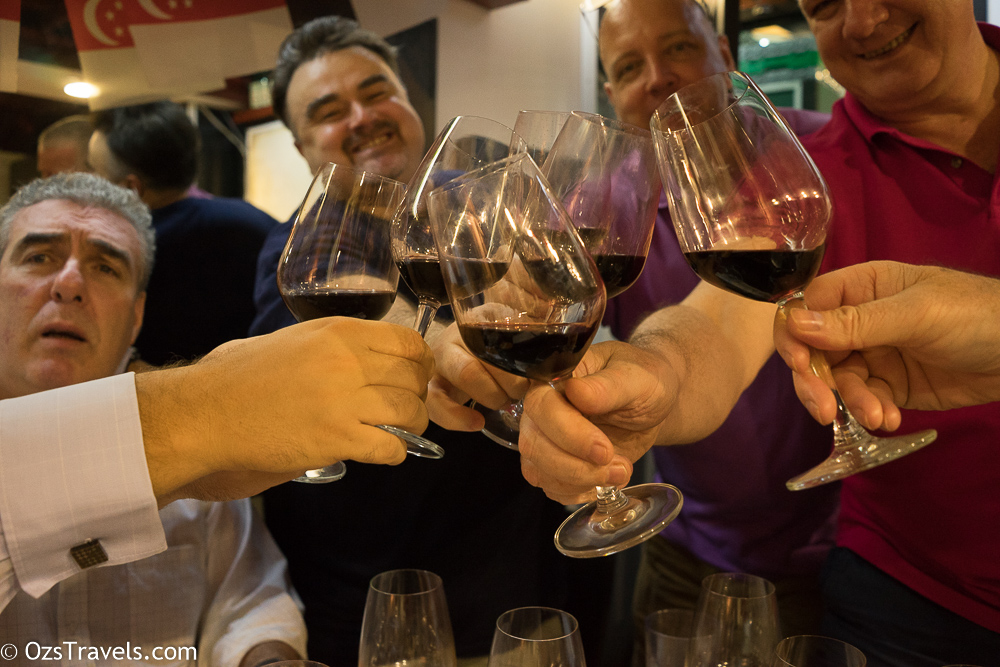Below are my notes on the second batch of wines that I have been lucky enough to taste so far in March 2016.
From this batch my favourites are the:
- 1991 Lindermans Limestone Ridge Shiraz Cabernet
- 2007 Grosset Gaia Cabernet Sauvignon Cabernet Franc Merlot
- 2007 Penfolds Bin A Chardonnay
The Wine:
| wdt_ID | Wine | Photo |
|---|---|---|
| 8 | Name: Penfolds Bin A Vintage: 2007 Region: Adelaide Hills, South Australia, Australia Varietal: Chardonnay Alcohol: 12.5% Colour: Bright golden straw Aroma: Elegant combination of peach, almond, lemon, lime and flint aromas Palate: Balanced, refined and complex Finish: Long Comment: Great wine, shows why Penfolds are one of the best wine makers in Australia and why the Adelaide Hills produces some of the best Chardonnays in Australia. Bin A wines are definitely worth a look! |
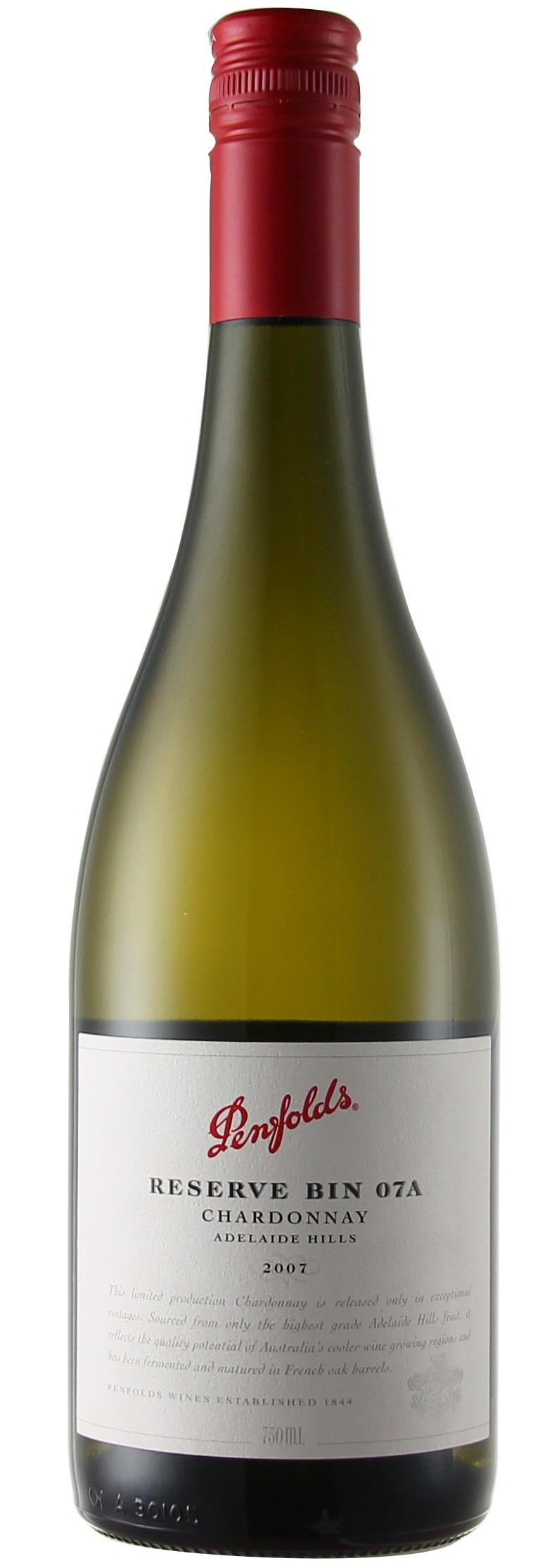 |
| 9 | Name: Yabby Lake Single Vineyard Vintage: 2014 Region: Mornington Peninsula, Victoria, Australia Varietal: Chardonnay Alcohol: 12.5% Colour: Pale straw Aroma: Refreshing mixture of lychee, lemon, lime and flint aromas Palate: Crisp with lychee and citrus flavours Finish: Medium-long Comment: Nice wine, not in the same class as the Bin A, but still a good Chardonnay |
 |
| 10 | Name: Domaine Serene Evenstad Reserve Vintage: 2011 Region: Willamete Valley, Oregon, USA Varietal: Pinot Noir Alcohol: 13.1% Colour: Bright light ruby Aroma: Earthy, medium-bodied combination of cherry, spice and black-pepper Palate: Balanced with cherry, spice, stone fruit and black-pepper flavours Tannin: Dry Finish: Long Comment: Very enjoyable, lighter style of Pinot Noir. Nicely balanced, tannins were a little dry, like the finish. |
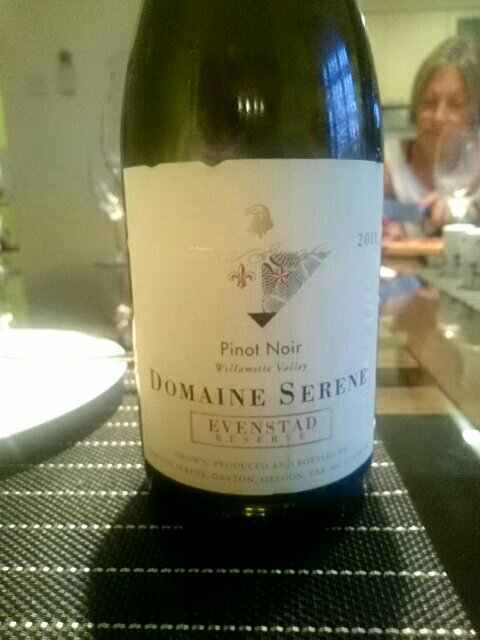 |
| 11 | Name: Tempos Vega Sicilia Pintia Vintage: 2010 Region: Castilla y Leon, Spain Varietal: Tempranillo Alcohol: 15% Colour: Rich, deep ruby Aroma: Herbal, medium-bodied mix of wild-berry, cherry and spice aromas Palate: Bold and balanced with layers of fruit Tannin: Savoury Finish: Long Comment: Really liked this wine, interesting and moreish mix of wild berries, cherries and spice with a balanced and bold palate. Worth a look, if not a few. |
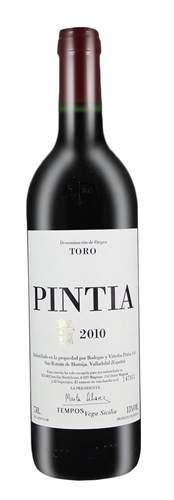 |
| 12 | Name: Grosset Gaia Vintage: 2007 Region: Clare Valley, South Australia, Australia Varietal: 75% Cabernet Sauvignon, 20% Cabernet Franc and 5% Merlot Alcohol: 14% Colour: Cloudy ruby Aroma: Perfumed combo of blackcurrant cedar and spice aromas Palate: Full-bodied complex and structured palate with blackcurrant, cedar, spice and tobacco flavours Tannin: Structured Finish: Long Comment: Great wine, surprised everyone at the dinner, another star produced by Geoffrey Grosset. The various varietal characteristics are easily found. This was my wine for the wine options game. |
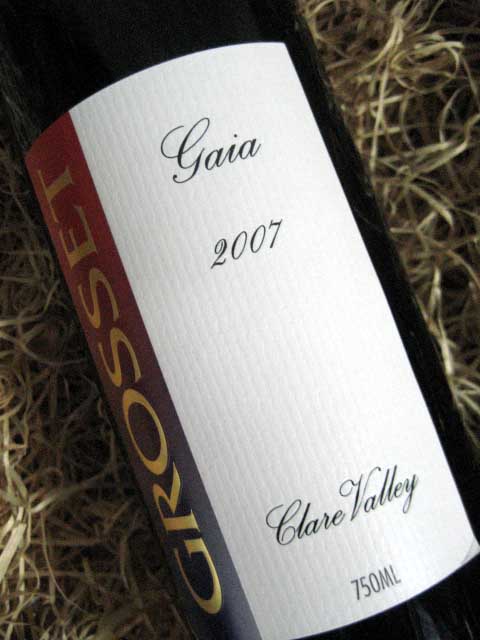 |
| 13 | Name: Lindermans Limestone Ridge Vintage: 1991 Region: Coonawarra, South Australia, Australia Varietal: Shiraz Cabernet Alcohol: 13% Colour: Dusty garnet Aroma: Very enjoyable mix of blackcurrant, cherry, liquorice and vanilla aromas Palate: Elegant and balanced palate Tannin: Silky Finish: Long Comment: What an amazing wine. At 25 years of age this wine has evolved and is still showing the characteristics of the Coonawarra and the varietals. |
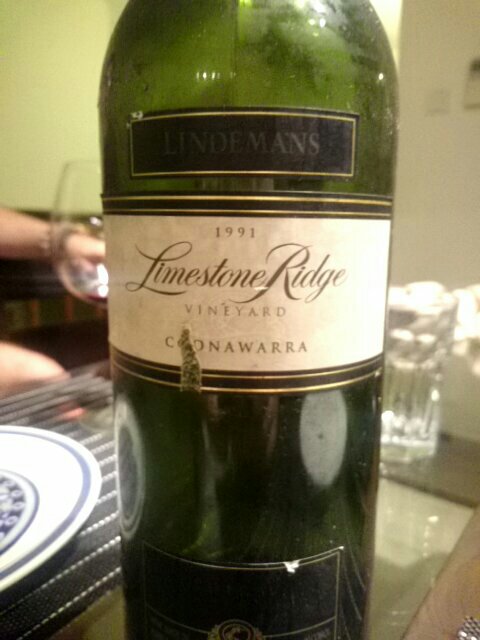 |
| 14 | Name: Seppelts Para Liqueur Port Vintage: 1944 Region: Barossa Valley, South Australia, Australia Varietal: Tawny Port Alcohol: Colour: Dull cloudy amber Aroma: Volatile and funky, very unpleasant Palate: Undrinkable Tannin: Finish: Comment: Unfortunately the cork in this bottle had failed, first sign of trouble, Para Ports from this era had extremely short corks which are prone to failure. Luckily for me this is the first of the Para Ports that I have purchased that this has happened to and I still have a few more, so hopefully it will be the last one. |
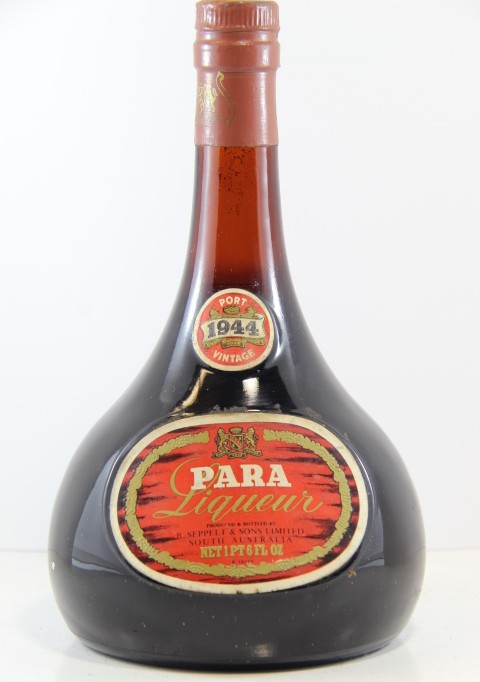 |
Oz’s Wine Reviews
The Options Game:
In addition to great wine another Australian contribution to the World of Wine is the Options Game. Len Evans, the Godfather of Australian Wine, is the person who invented it.
The Rules:
- Each participant brings a bottle of wine, ensuring that it is either decanted out of sight of the participants or that it is sufficiently disguised so that the others cannot determine what it is
- The person presenting the wine then asks around five multiple choice questions, the objective of the questions is to identify the wine, so if you are going to try this, a bit of planning is a good idea.
- Each question is to include up to three options to choose from, one of the options must be correct (sounds like someone bent the rules at some stage, guess that a lawyer or two were involved in the honing of the rules)
- Not sure I am a fan of the three option limitation.
- There are two exceptions to this the four major communes of Bordeaux and the communes of Haut Medoc.
- I believe that there may be other times when four options could be a good idea as there may be an obscure region that if added to the options would be easily identified, where if you throw in a couple it could increase the difficulty in identifying the wine. Just my opinion!!
- Only two questions can be asked about the vintage
- No restriction on the number of questions about the variety, region and / or maker
Options to the Options
The size of the group and knowledge (plus patience and or interest) of people participating may mean that you need to tailor the way you ask the answers, a few ideas are below, the first option is the traditional way, we use the third option usually at our dinners.
- If you are attending an event where there are a number of people who are going to participate the idea is to ask each person a couple of questions and then progress to the next person and so on until all of the questions are asked and then the entire group are asked to identify the wine
- With a large group another option is to make it a “knock-out” competition ask each question and “knock-out” the people who have answered incorrectly until there is only one left!
- A more casual style, which is what we do at dinners, is to ask the entire table all of the questions, providing the answers as you go.
Options Game Example Questions
- Old World or New World? A: Old World, B: New World
- Where is this wine from? A: Australia, B: South America, C: US
- Is it a blend or single varietal? A: Blend, B: Single
- What is the secondary varietal? A: Cabernet, B: Cabernet Franc, C: Merlot
- Which region of Australia is this from? A: Coonawarra, B: Great Southern, C: Clare Valley
- Which Vintage? A: 1997, B: 2003, C: 2007?
Answer: 2007 Grosset Gaia Clare Valley, South Australia, Cabernet Sauvignon (75%), Cabernet Franc (20%) Merlot (5%)
Have you played this or a variation of the Options Game?
